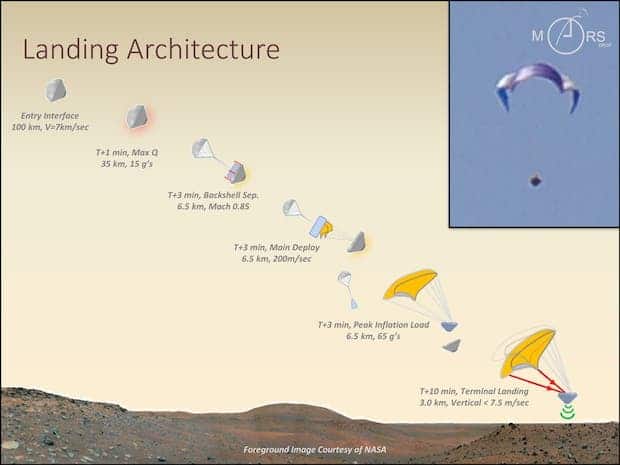An innovative concept might allow engineers to send probes on Mars in previously inaccessible locations. The project, called MARSDROP, would send two landers to the Red Planet, where they would detach from the shuttle and glide down to the planetary surface.

This apparently crazy idea was developed by Rebecca Williams, a senior scientist with the Planetary Science Institute, who collaborated with Matthew Eby from the Aerospace Corporation and a team of engineers led by Robert Staehle at NASA’s Jet Propulsion Laboratory in Pasadena, California. Together, they planned a way to reach geologically active areas, such as geysers or areas with potential water flows.
“What is particularly exciting about this new approach is the possibility of landing in new locations like the canyons in Valles Marineris or at modern geologically active sites such as south-polar geysers or locations with inferred seasonal release of surface water flows,” Williams said in a statement.
To make things even crazier, this technology could pave the way for future human exploration.
“MARSDROP can help lay the groundwork for future human exploration of Mars,” said Williams. She hopes the MARSDROP project will enable scientists to plan expeditions in areas more likely to hold water.
A prototype has already been successfully tested. Using terrain-relative video navigation, they managed to steer the probes within a few meters of their desired landing spot – something remarkable when you consider that the probe was navigating at 7.5 meters per second.To make things even better, the entire system is extremely cheap, adding only 5% costs to a potential Mars mission. Together, the small size of the probe, high maneuverability and high speed have the potential to revolutionize how we explore planets. The microprobes would carry an entire load of sampling instruments, such as cameras, weather sensors, seismometers and microscopes that can study minerals and inorganic substances. Some engineers are already working on similar projects for Venus or Saturn’s moon Titan.
But until then, the stage seems set for Martian exploration, and a human mission to Mars seems more and more possible by the day.
“MARSDROP can help lay the groundwork for future human exploration of Mars by characterizing biohazards like Martian dust and assessing the availability of key resources, such as water from which oxygen and rocket propellant can be made,” Williams said.






